Lemon Mustard Roasted Broccoli and Cauliflower
This post may contain affiliate links. Please read my disclosure policy.
Put mustard on broccoli or cauliflower? No way! But wait… don’t be so quick to turn up your nose! Lemon Mustard Roasted Broccoli and Cauliflower is not only surprisingly delicious, it’s a quick and easy no-fuss side dish that you’re sure to make again and again.
Toss fresh broccoli and cauliflower florets in olive oil whipped up with stone ground Dijon mustard, fresh lemon juice, and garlic, then oven roast the veggies until slightly caramelized and tender.
What’s more, this easy recipe can be adapted for Brussels sprouts, carrots, or even baby potatoes. The possibilities are endless!
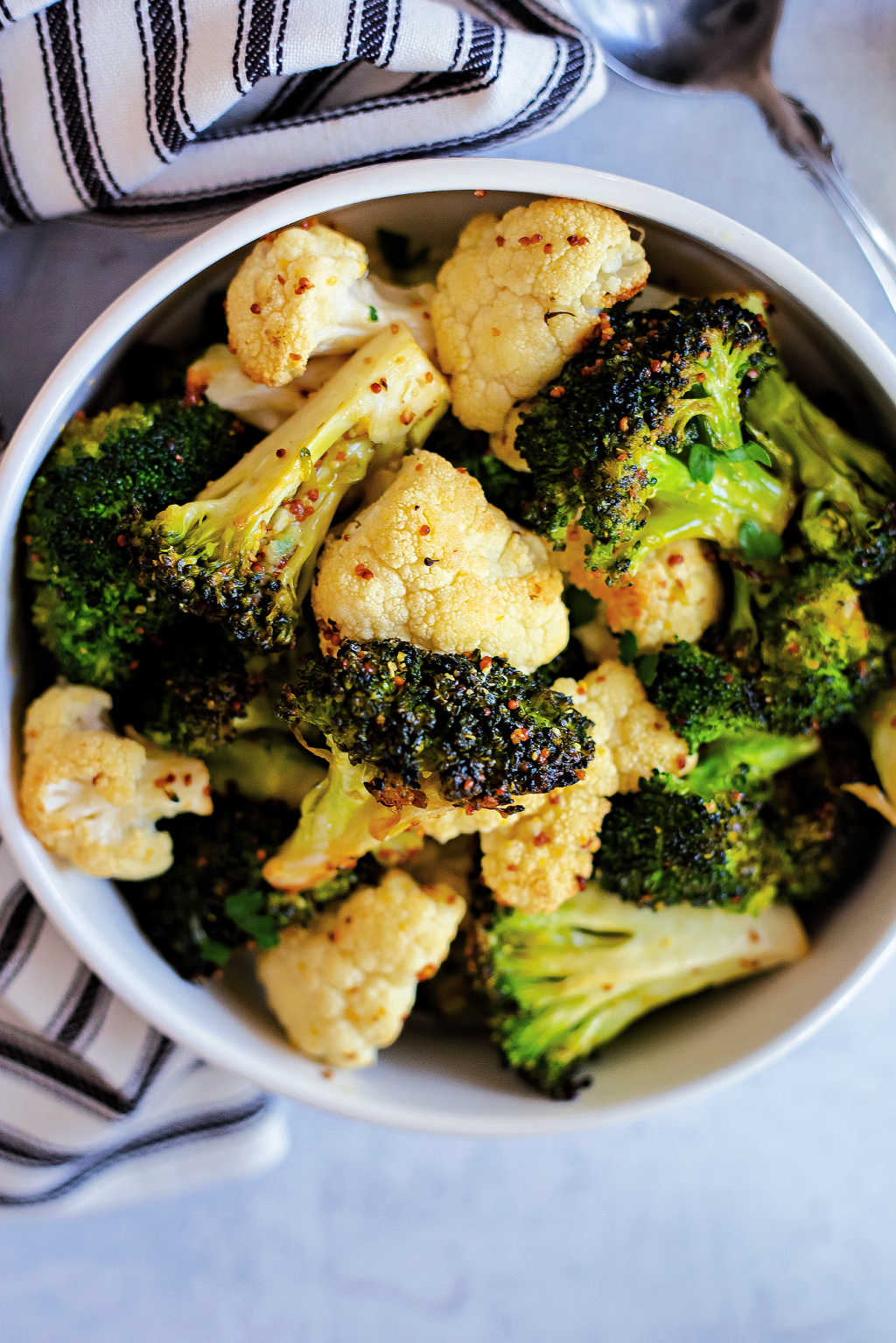
Roasted Broccoli and Cauliflower
Are you a mustard lover like me? I love a good honey mustard salad dressing, use mustard in my favorite Orange Mustard Glazed Pork Chops, and occasionally even make my own Homemade Stone-Ground Mustard.
So when I was thinking about a way to use up extra broccoli and cauliflower in my fridge, I spied a jar of Trader Joe’s Whole Grain Dijon Mustard and the wheels started turning.
For me, some of my best recipes are the result of cleaning out the refrigerator and a little creativity. This experiment was definitely a win!
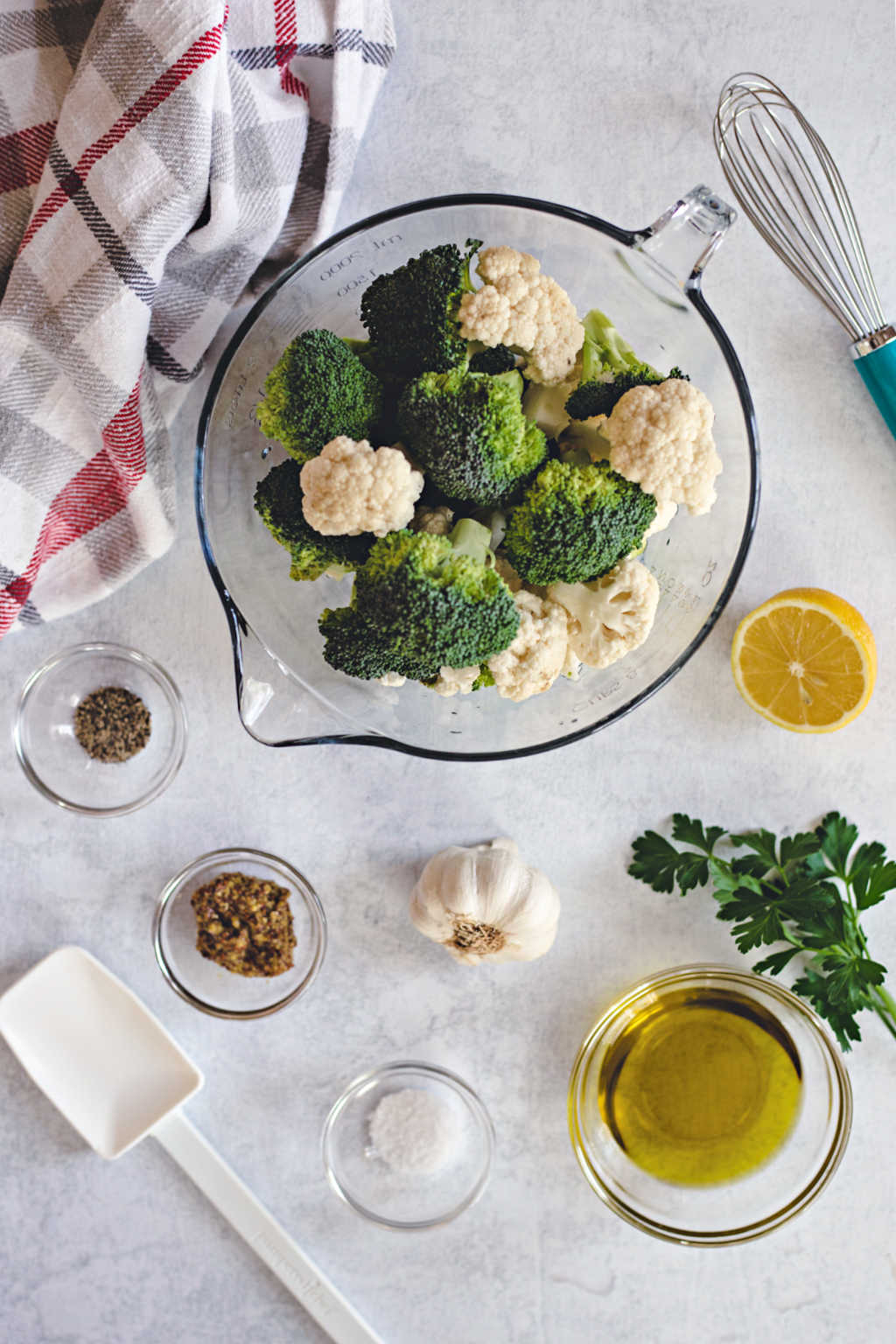
Ingredients
- Broccoli — cut into large florets
- Cauliflower — broken into large florets
- Extra-virgin olive oil
- Stone-ground Dijon mustard — or regular Dijon mustard
- Garlic — fresh or jarred minced garlic
- Fresh lemon juice
- Kosher salt
- Freshly ground black pepper
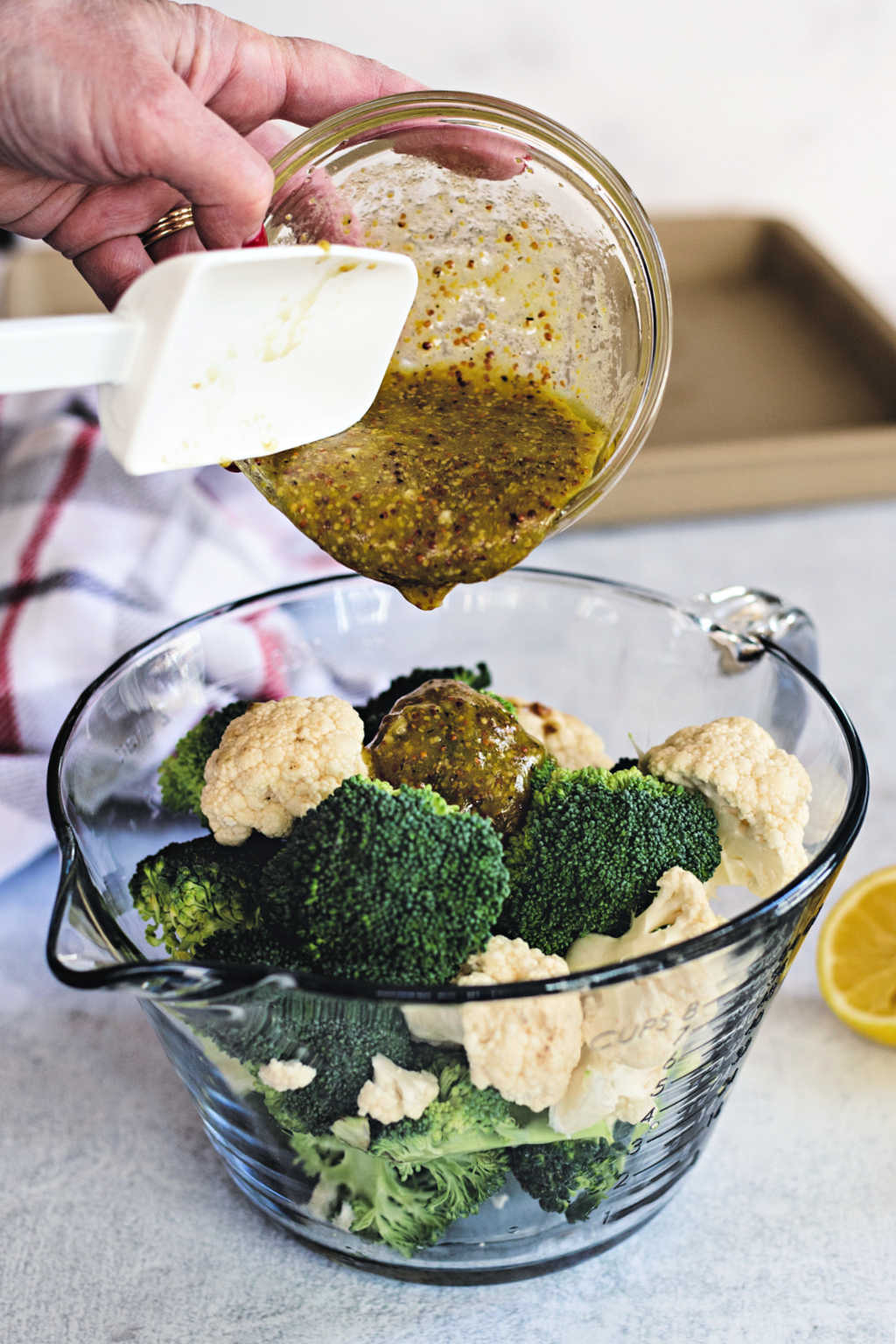
Instructions
- Rinse the broccoli and cauliflower and dry with paper towels. Cut the vegetables into large florets and place in a large bowl. Smaller florets get tough and chewy.
- In a small bowl, whisk together the olive oil, lemon juice, garlic, and Dijon mustard. Pour over the veggies and toss gently with a rubber spatula until all are well coated.
- Pour the vegetables on a parchment paper or aluminum foil lined rimmed baking sheet or on a baking stone. Spread them out in an even layer, making sure that they are not crowded.
- Season with salt and freshly ground black pepper.
- Bake at 425 degrees for 20 minutes, stirring halfway through. Remove from the oven and serve with lemon wedges, if desired.
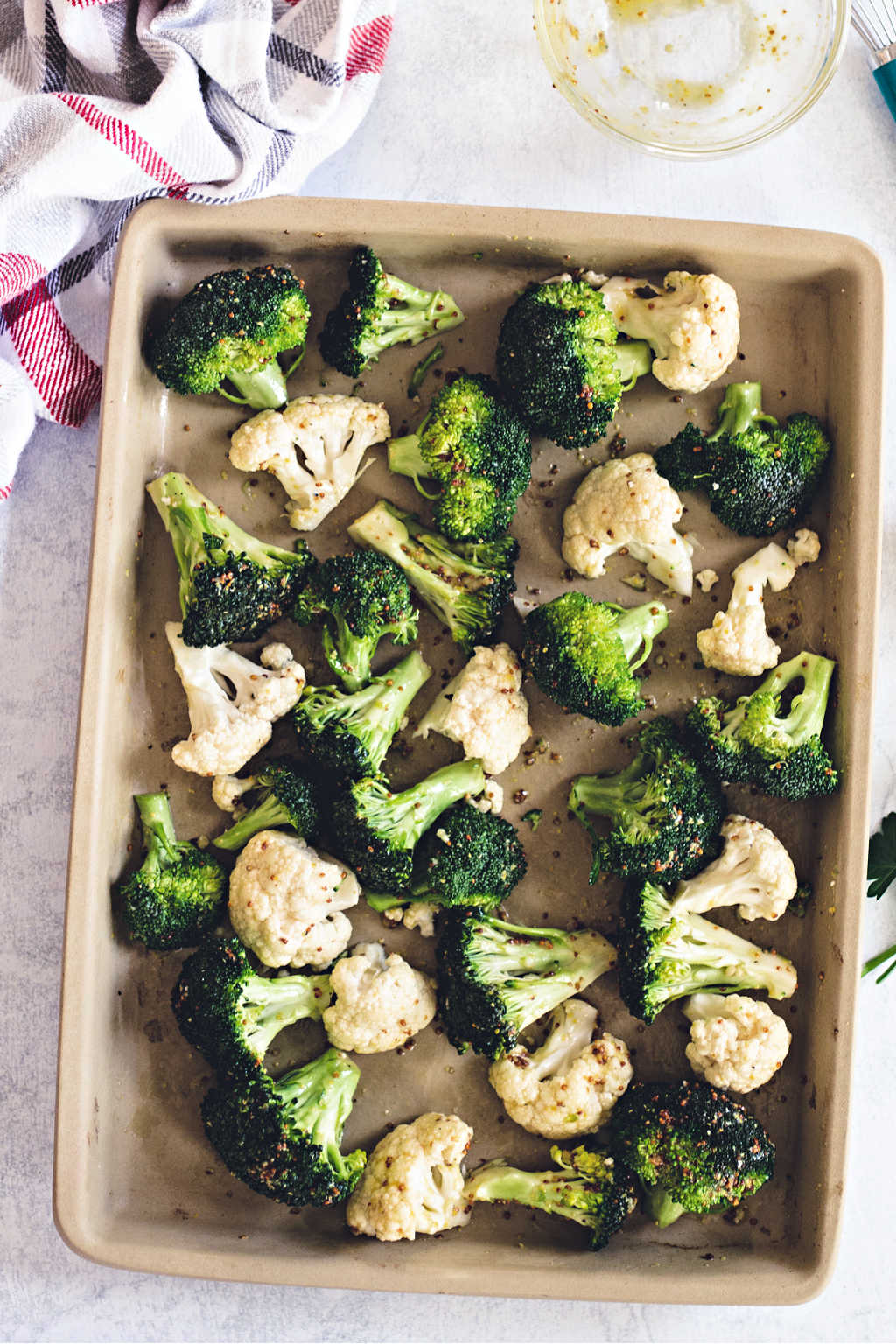
PRO TIP: If you own a stone pan, place it in the oven as it preheats. When you add the veggies to the hot pan, they will immediately start to sear and caramelize.
Do you have to wash cauliflower and broccoli before roasting?
Wash the cauliflower and broccoli to remove any grit hiding between the crevices. Place the veggies in a colander under cool running water, then dry thoroughly with paper towels. If too much moisture remains, the vegetables will steam instead of roast.
Do you have to steam broccoli before roasting it?
There’s no need to steam broccoli or cauliflower before roasting as they will cook completely and get tender in the oven. If you plan to roast the stalks, however, you may wish to peel them and cut then in half before adding to the pan.
Can roasted broccoli and cauliflower be reheated?
Absolutely. It’s best when reheated in the oven (10 to 15 minutes at 350 degrees), but you can warm it in the microwave for a quick fix.
Why are my roasted vegetables mushy?
Most likely, your vegetables were not dry before you coated them with oil and were too crowded on the pan. Always place the vegetables in an even layer with a little space between to avoid steaming them in the oven which will make them a bit mushy.
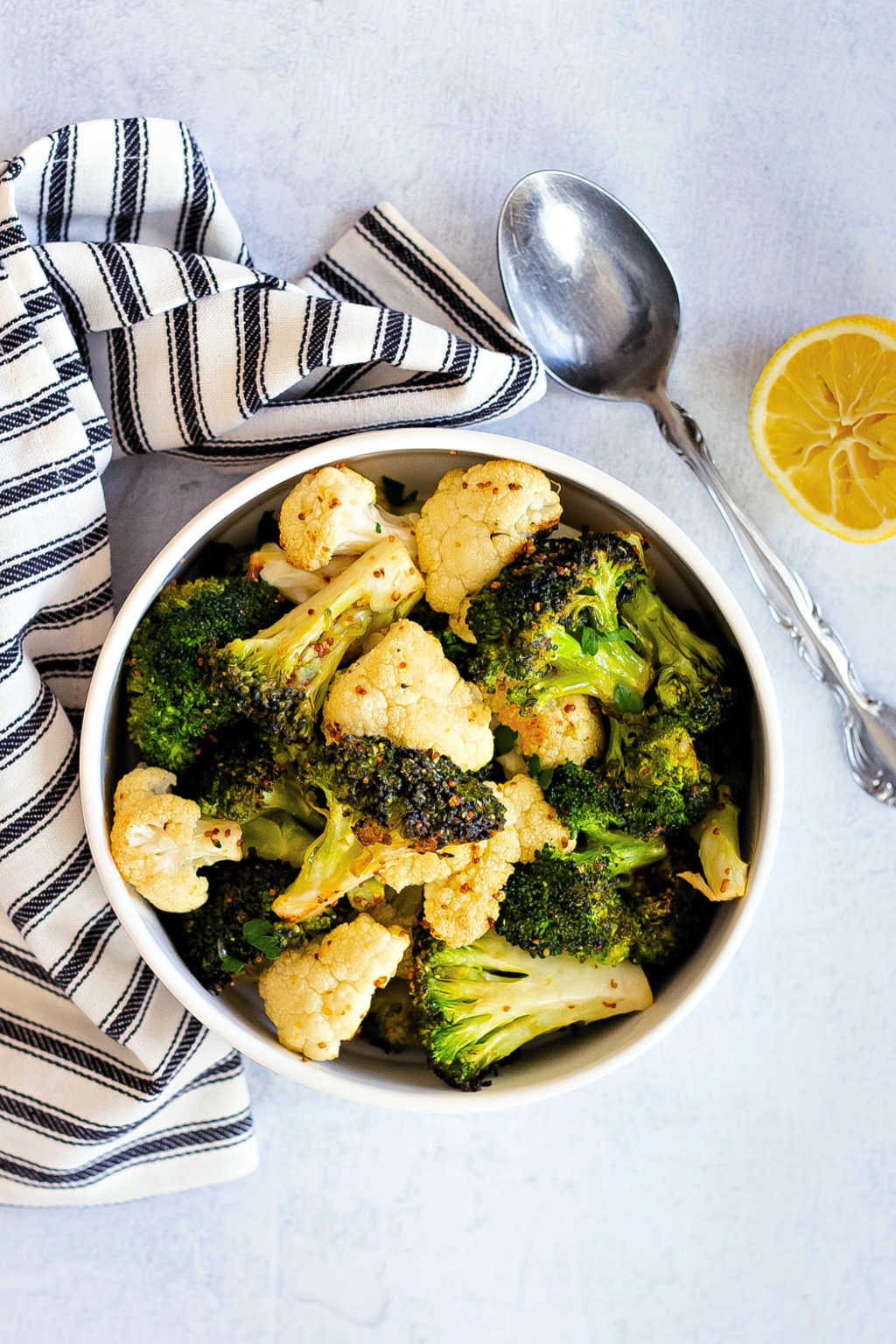
Which oil is best for roasting vegetables?
Extra-virgin olive oil will not only give roasted vegetables extra flavor, it performs well at the roasting temperature imparting a crispy, caramelized texture.
What is the best temperature for roasting vegetables?
I like to roast my asparagus at 400 degrees, but for broccoli and cauliflower, I find that 425 degrees is better for getting tender, caramelized veggies.
Should I cover vegetables when roasting?
Don’t cover vegetables when roasting, otherwise they will steam instead of getting crispy and caramelized.
Which is better for roasting, aluminum foil or parchment paper?
For easy cleanup, line your baking sheet with either aluminum foil or parchment paper. If using aluminum foil, coat it lightly with nonstick cooking spray.
Parchment paper has a waxy surface and doesn’t require the spray. Also, when using parchment paper, make sure it is not too close to the oven’s heating element.
Recipe variations
Toss these vegetables with today’s Dijon mustard mixture for more tasty roasted veggie side dishes:
- Baby potatoes
- Baby carrots
- Brussels sprouts
- Sweet potatoes
- Beets
Related recipes
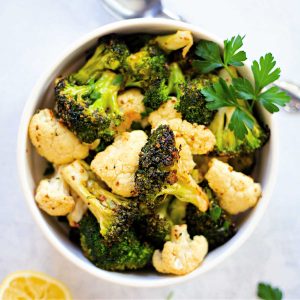
Lemon Mustard Roasted Broccoli and Cauliflower
Ingredients
- 4 cups broccoli florets
- 4 cups cauliflower florets
- ⅓ cup extra virgin olive oil
- 2 tablespoons stone ground Dijon mustard
- 1 tablespoon fresh lemon juice
- ½ teaspoon kosher salt
- ¼ teaspoon freshly ground black pepper
Instructions
- Preheat the oven to 425 degrees.
- Rinse the broccoli and cauliflower under cool water and dry thoroughly with paper towels.
- Cut the vegetables into large florets and place in a large bowl. Smaller florets tend to get tough and chewy when roasting.
- In a small bowl, whisk together the olive oil, lemon juice, garlic, and Dijon mustard. Pour the mixture over the veggies and toss gently with a rubber spatula (or your hands) until all the vegetables are evenly coated.
- Pour the vegetables onto a parchment paper or aluminum foil lined rimmed baking sheet (or on a rimmed baking stone). Spread into an even layer, making sure the veggies are not crowded, otherwise they will steam instead of roast.
- Sprinkle evenly with the salt and freshly ground black pepper. Bake for 20 minutes, stirring halfway through, until tender and slightly caramelized or golden brown on the edges.
- Remove the pan from the oven and give the veggies a squeeze of lemon juice, if you like.
Notes
Nutrition
Life Love and Good Food does not claim to be a registered dietician or nutritionist. Nutritional information shared on this site is only an estimate. We recommend running the ingredients through an online nutritional calculator if you need to verify any information.


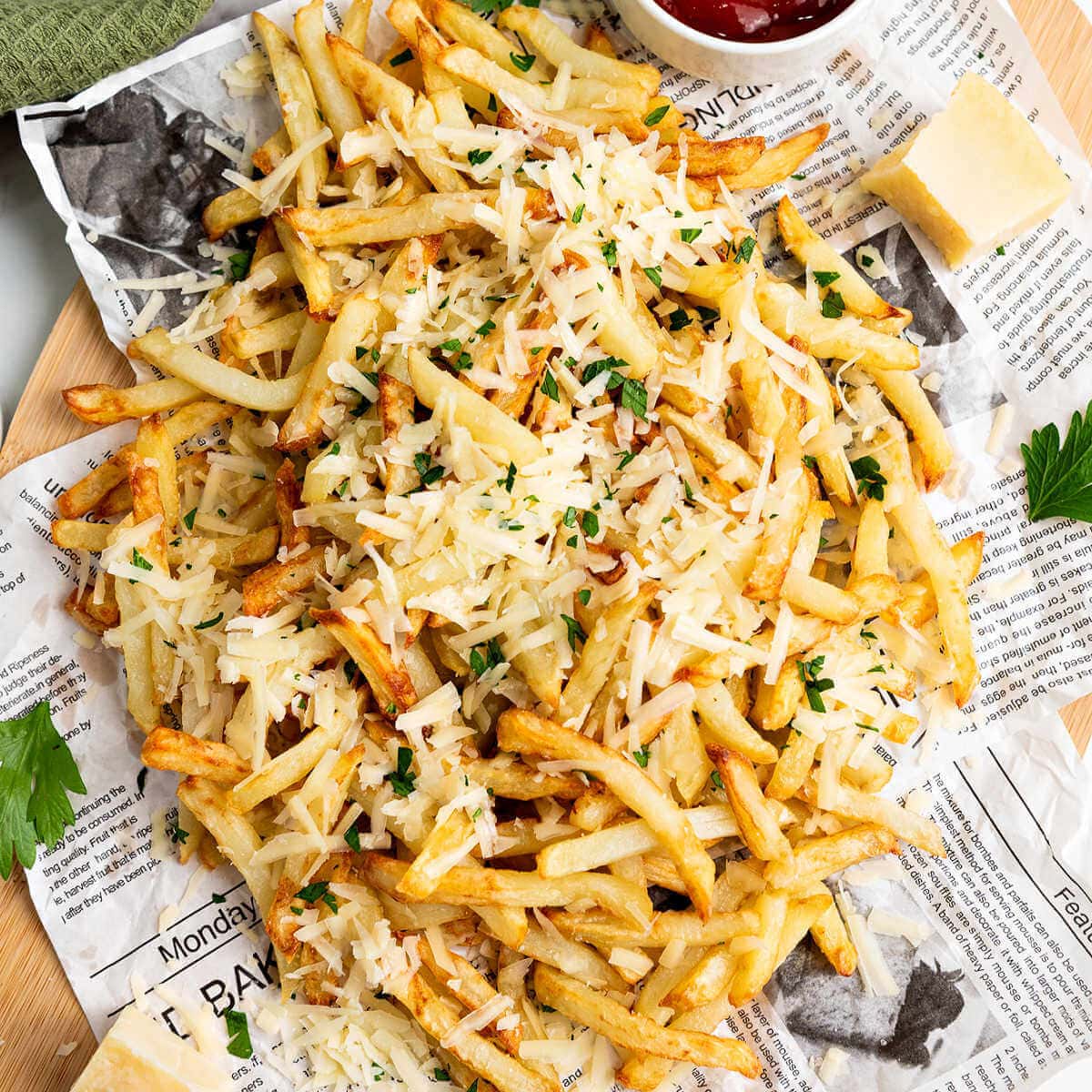
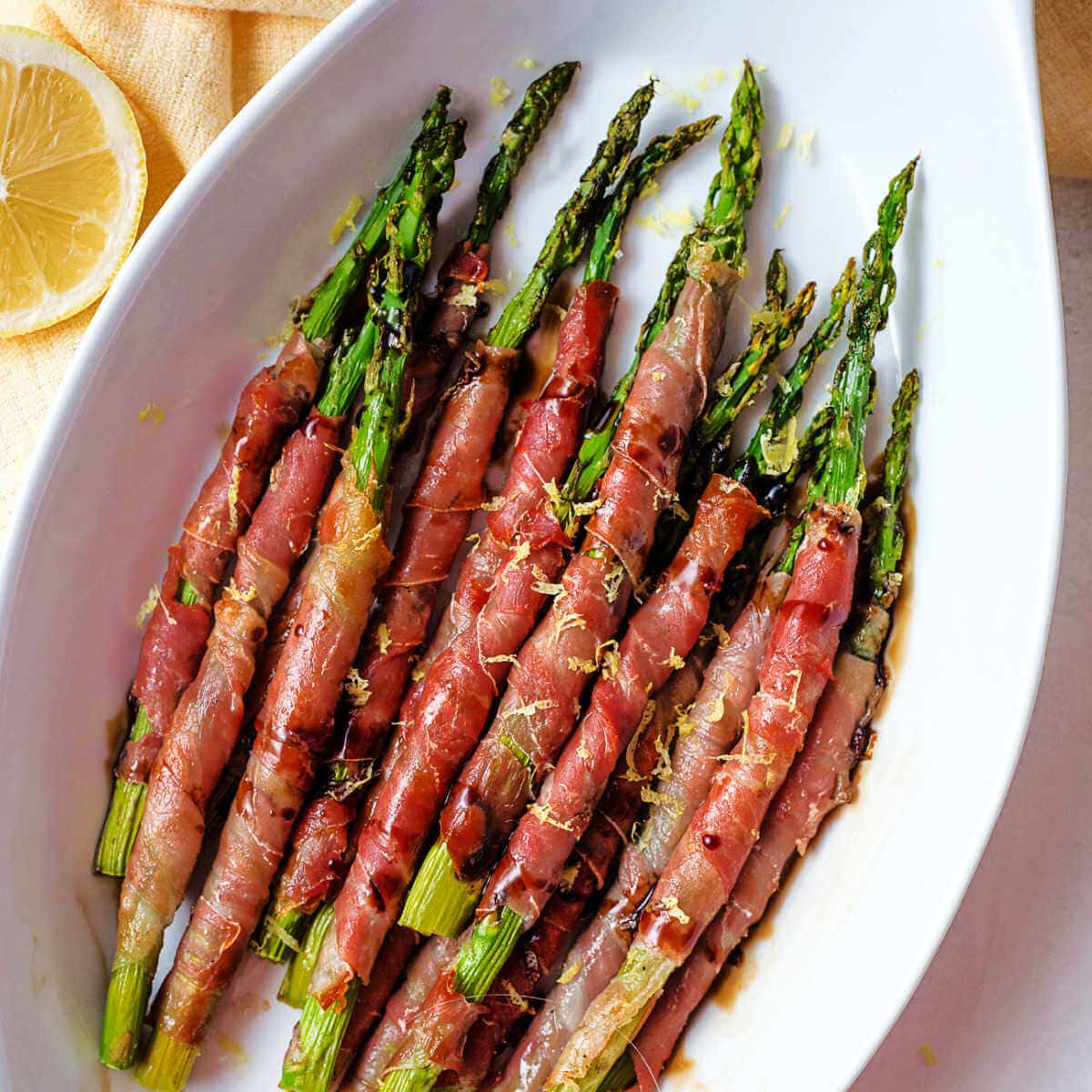
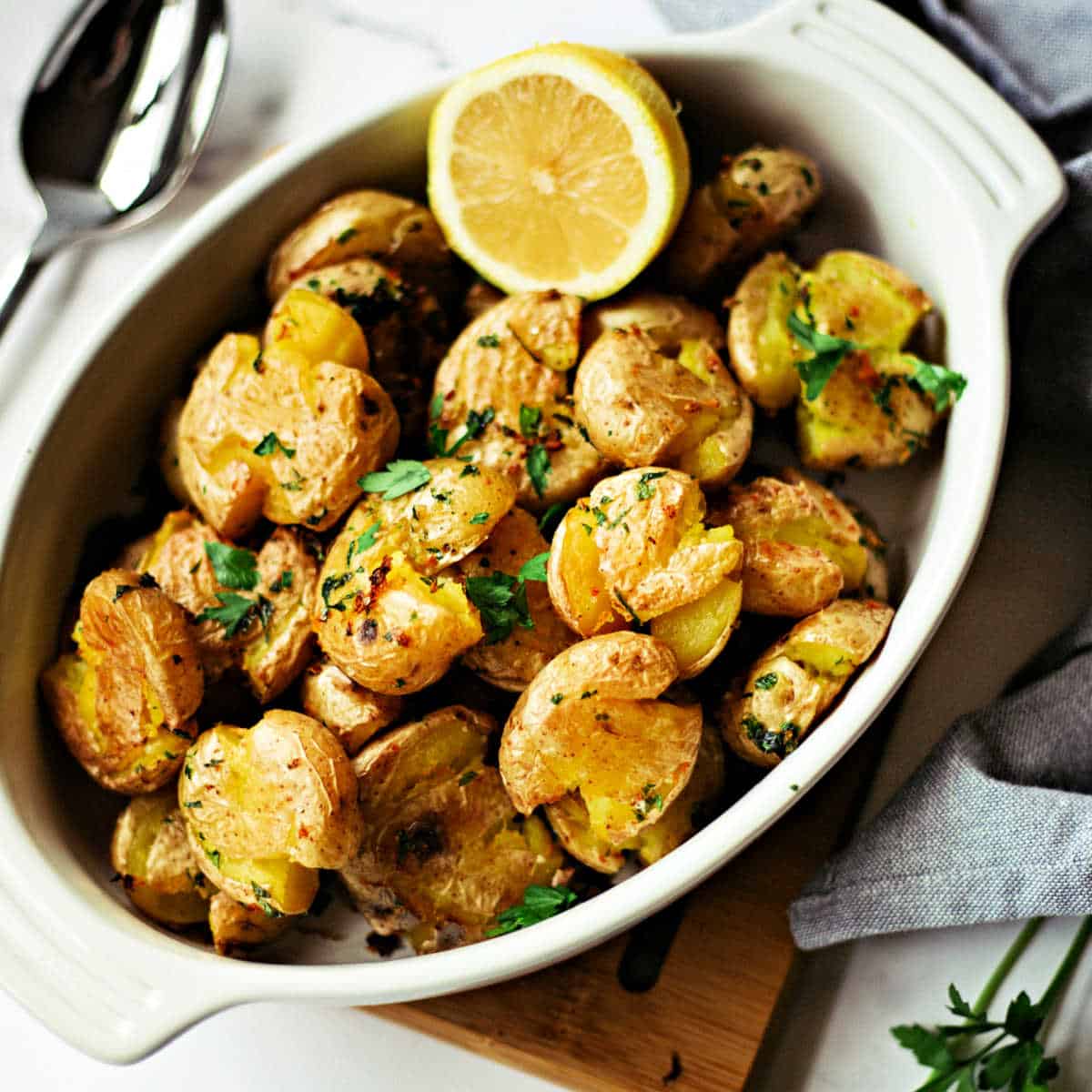
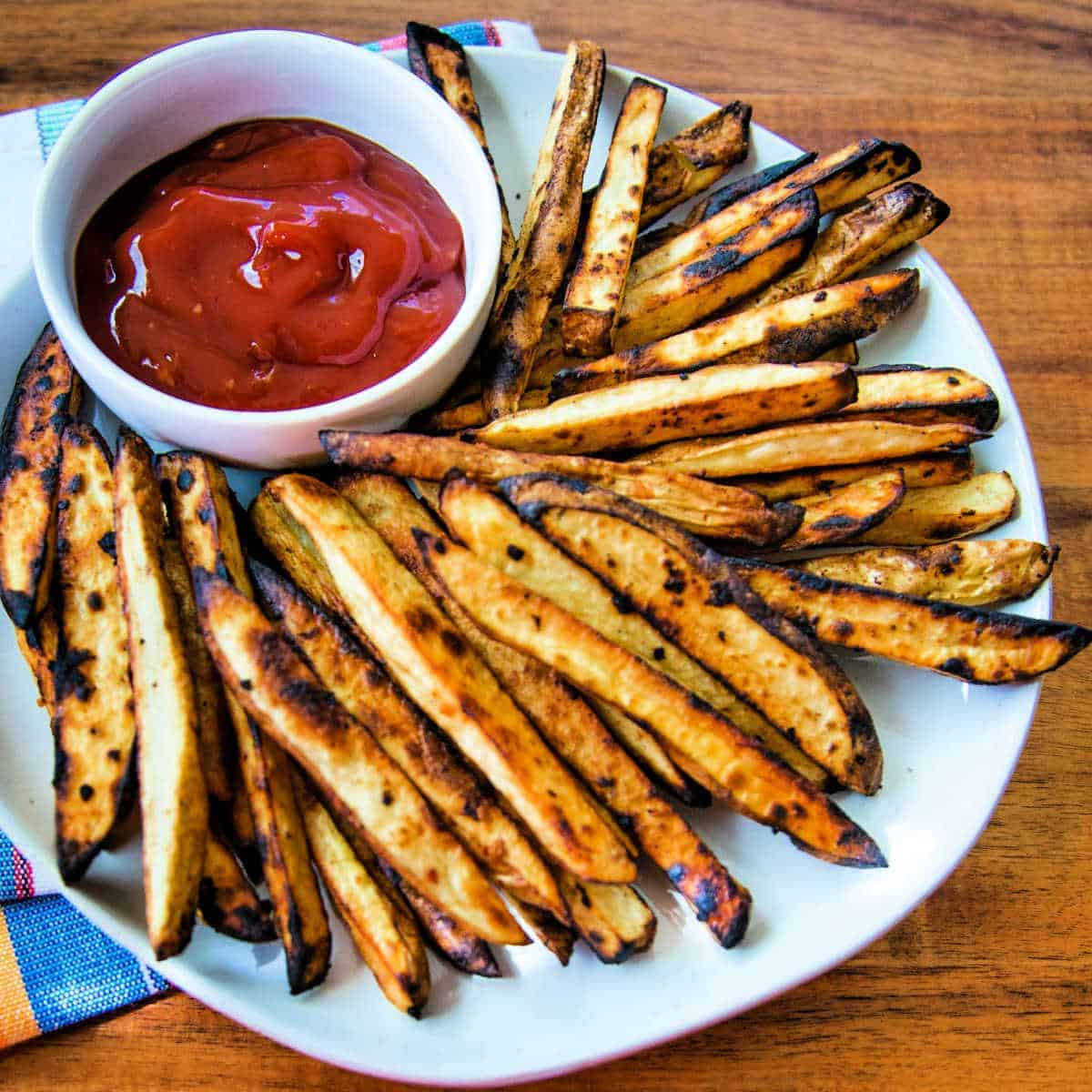

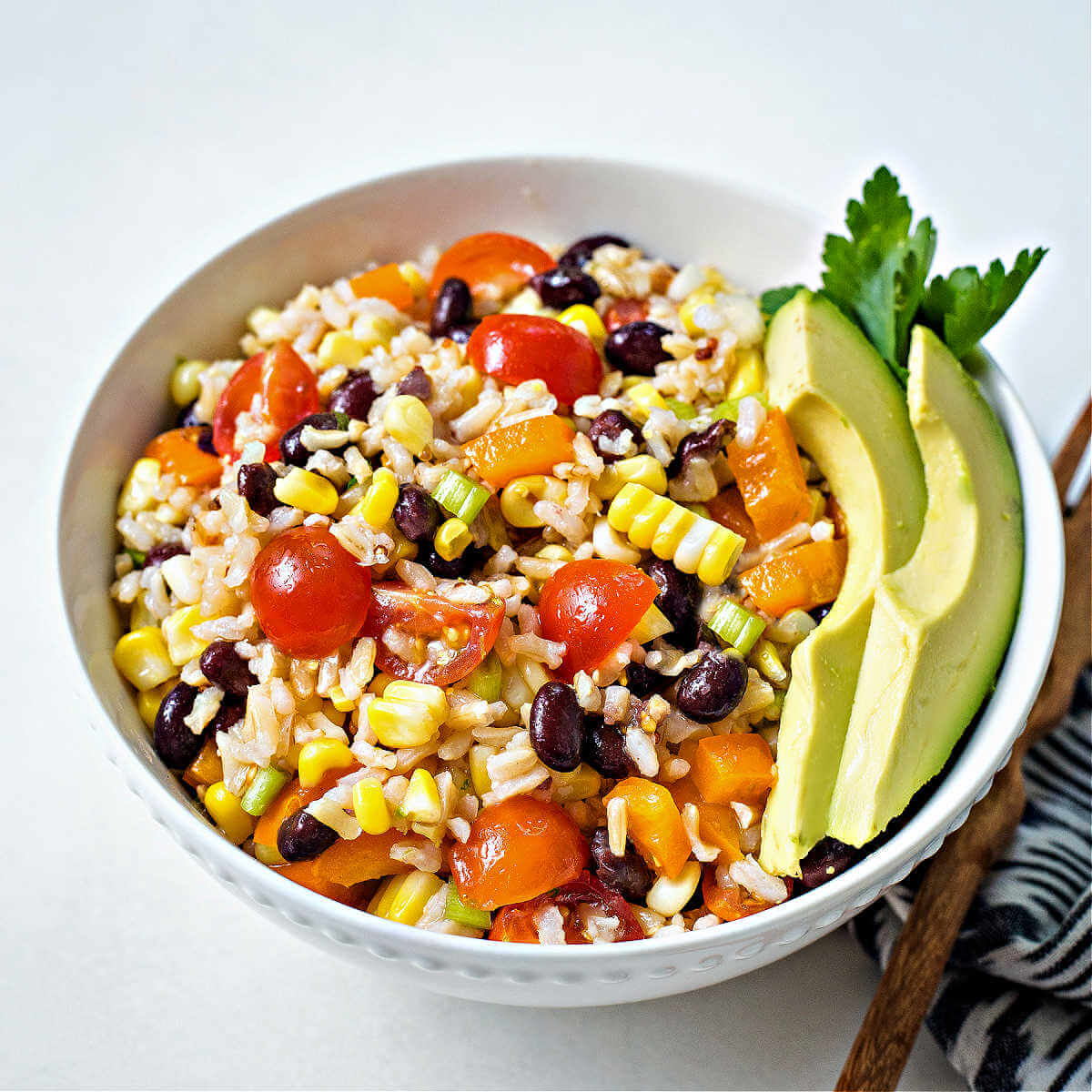
It sounds wonderful and I want to make it. Recipe doesn’t say how much garlic to use.
Cheryl, try substituting the flour 1-to-1 with a gluten-free flour.